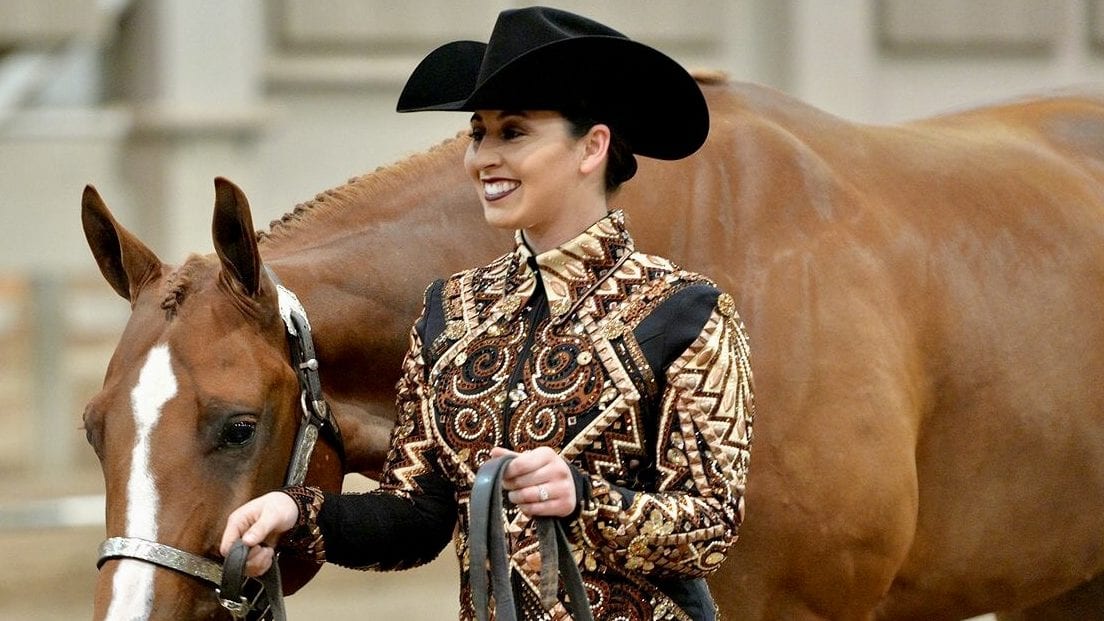What is it about those exhibitors who, the moment they approach the cone, you know they’re going to nail their pattern? Those same exhibitors who, even in the warm-up pen, your eyes are drawn to them? The ones who make the judges sit up and think, Now here’s a contender?
For some, it may seem like these exhibitors have some secret X-factor you just can’t put your finger on that gives them a leg up on their competition. But here, in the first of this two-part series, three AQHA judges explain that there is no flashing neon sign screaming, “Pick me!” invisible to everyone but judges.
But there are some tell-tale signs an exhibitor brought her A-game (or clearly didn’t) that, to judges, are just as visible as flashing, fluorescent lights.
“I Brought My A-Game” Sign #1: A Tailored Turn-Out
All three judges agreed that though “blingy,” heavily jeweled or stoned outfits can look impressive, what is more important is a clean, well-tailored look.
 “A neat, well-fitted button up shirt is simple, elegant and professional,” Cindy Rucker says, who has judged all the major AQHA shows in the country. “If chaps are well-fitted and shirts are tucked in and very well fitted – no matter the body type – and they look clean cut, that can make all the difference.” (pictured right)
“A neat, well-fitted button up shirt is simple, elegant and professional,” Cindy Rucker says, who has judged all the major AQHA shows in the country. “If chaps are well-fitted and shirts are tucked in and very well fitted – no matter the body type – and they look clean cut, that can make all the difference.” (pictured right)
2016 AQHA Professional Horsewoman of the Year, Christa Baldwin agrees, adding, “Clothes don’t have to be as blingy as people think they do…but they have to fit. It can’t be that you just bought it off the rack in your size and it kind of fits. The pants and jacket need to look tailored, and the colors need to be complementary to your horse and to you.”
Similarly, judge Charlene Carter, who has judged all the major shows in several breed organizations, explains that a professional outfit is a major piece of the puzzle. “I look at the overall picture – not necessarily the most stoned or fancy outfit – but the most put together and how the colors and everything ties together,” she says.
None of these things will matter, though, if the outfit is topped off with a misshaped hat, the judges say. A professional looking hat is an absolute must.
“I Brought My A-Game” Sign #2: The Horse’s Turn-Out
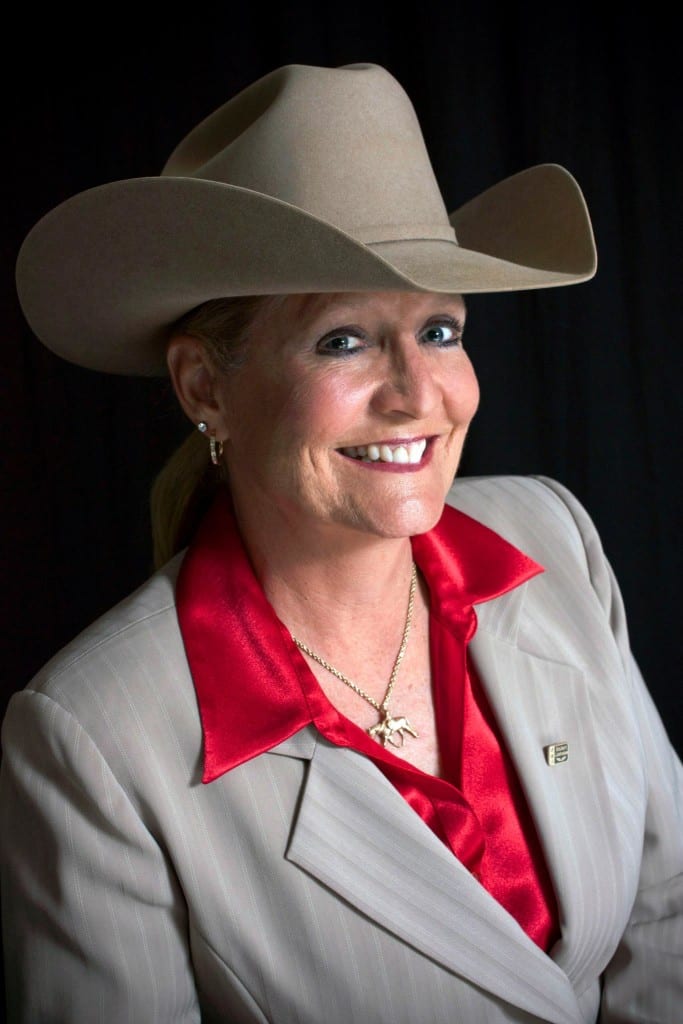 Many exhibitors spend months ensuring their outfit is stunning on show day, but the exhibitor who brought their A-game put just as much planning and preparation into their horse’s turn out…that means more than a bath and a bridle path trim the night before the show.
Many exhibitors spend months ensuring their outfit is stunning on show day, but the exhibitor who brought their A-game put just as much planning and preparation into their horse’s turn out…that means more than a bath and a bridle path trim the night before the show.
“The horse must be neatly turned out, groomed, trimmed, have fat over its ribs, and should look like you’re proud of it. Remember that showmanship doesn’t start when you enter the ring – it starts weeks before with proper nutrition. It continues into the week of the show with careful clipping and bathing, and then finally into the day of the show when you’re adding the shine,” Baldwin says. (pictured left)
The three judges remind exhibitors to ensure bands are correct and appear fresh, that the tail is put in correctly and hanging at an appropriate length, and that hooves are clean. Additionally, they want to see that the equipment is clean, the blanket fits beneath the saddle and that the whole look complements both horse and rider.
“The whole picture becomes part of your first reaction, and attention to those finer details give a quality look,” Rucker explains.
“I Brought My A-Game” Sign #3: Strategic Pattern Execution
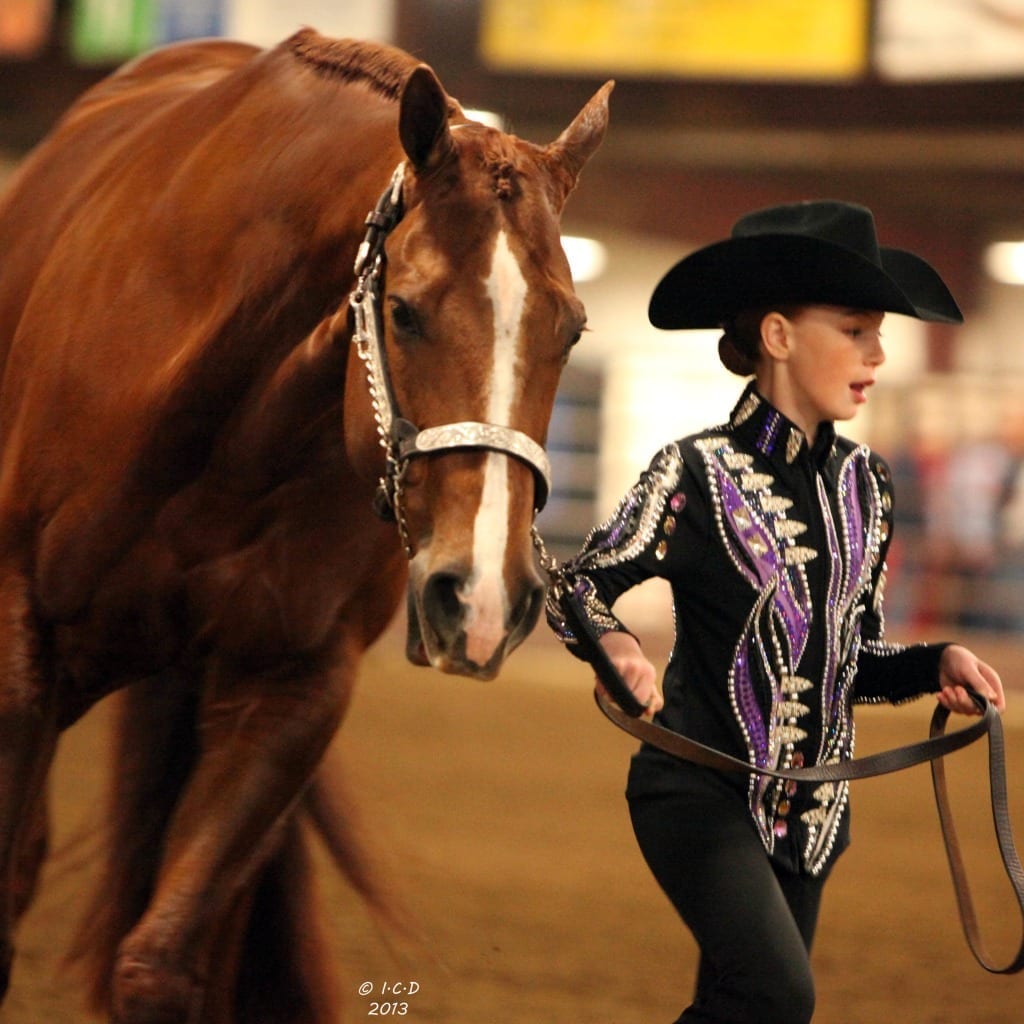 The exhibitor who turns heads in a pattern class is not only the one who looks the part regarding turn-out but one who seeks out opportunities to showcase themselves and their horses within the pattern.
The exhibitor who turns heads in a pattern class is not only the one who looks the part regarding turn-out but one who seeks out opportunities to showcase themselves and their horses within the pattern.
For example, Rucker explains that she’s been using a pattern with only one cone, a situation that allows exhibitors to use as much or as little of the arena as they’d like. Those bringing their A-game, she notes, will find a way to use such a pattern to their advantage.
“I think we’re starting to sacrifice a beautiful pattern for trying to get it done quickly; if they will ride a long line and ride it beautifully, that keeps them in front of me longer and gives me the chance to evaluate longer,” she says. “With a pattern with one cone like that, they can make it as big or as little as they want to make it; if they make it small, they make it more difficult for themselves more times than not.”
To put it plain and straightforward: “If you have the opportunity to use more space, use it,” Rucker says.
“I Brought My A-Game” Sign #4: Focus on the Detail
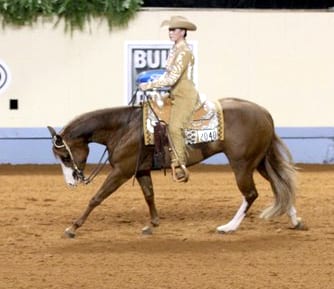 Whether riding the rail or executing a pattern, the exhibitors who clearly came to win not only perform maneuvers fluidly and correctly but attend carefully to detail throughout the duration of the class. This means ensuring your positioning is advantageous and your grooming is meticulous – not one hair on your head (or your horse’s) is out of place.
Whether riding the rail or executing a pattern, the exhibitors who clearly came to win not only perform maneuvers fluidly and correctly but attend carefully to detail throughout the duration of the class. This means ensuring your positioning is advantageous and your grooming is meticulous – not one hair on your head (or your horse’s) is out of place.
If it’s a pattern class, Rucker lists the finer details that may show someone is a real contender as seamless transitions, genuine smiles, and being ready to begin the pattern immediately. “I want to see them standing quietly at the cone – and that takes practice. They’ve got to have a smile on their face that’s genuine – and, yes, there’s a difference. They need to look like they enjoy what they’re doing and ready to show us what they can do.”
To turn heads, in addition to nailing the major maneuvers, begin considering what other opportunities exist that can help you strut your stuff.
“Transitions are important. People forget about transitions. It’s the finer, small things that set one apart – how quickly do you move into that trot or that extended lope? How easily does your horse move forward? Those transitions can escalate your score and take you to the top quickly,” Rucker says.
“I Brought My A-Game” Sign #5: Confidence and a Connection with the Horse
Though all of these signs contribute to an overall presence that shows judges an exhibitor is prepared to vie for the class’s top spot, above all else, the three judges cite an air of confidence as the biggest factor that will turn their heads.
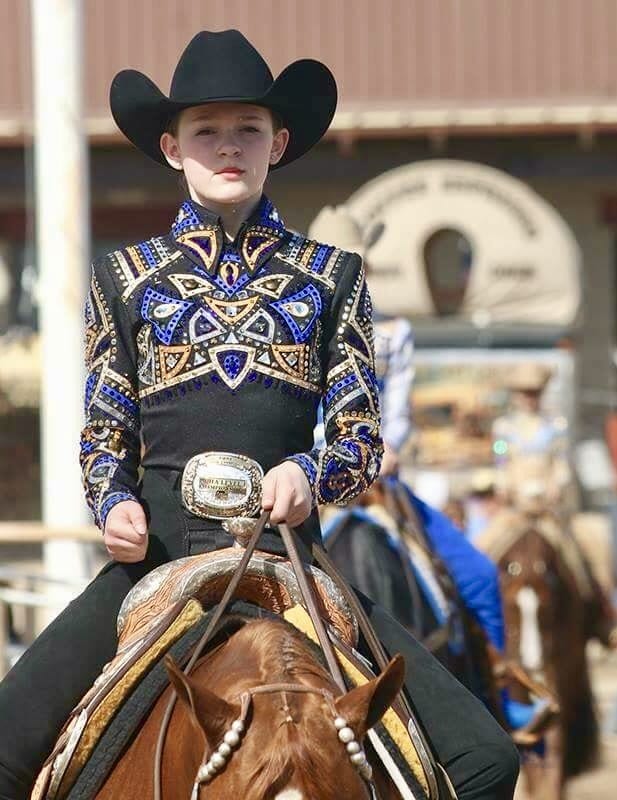 “You can tell when someone walks into the pen, they might make some mistakes, but you can say that they’re used to winning because of the confidence they’re exuding. If you don’t have the confidence, fake it!” Baldwin says with a laugh. She reminds exhibitors to never stop showing, despite difficulties they may encounter in their class. In fact, both she and Carter say that if two riders make the same mistake or are tied on their cards, it’s confidence that will tip the scales for one or the other.
“You can tell when someone walks into the pen, they might make some mistakes, but you can say that they’re used to winning because of the confidence they’re exuding. If you don’t have the confidence, fake it!” Baldwin says with a laugh. She reminds exhibitors to never stop showing, despite difficulties they may encounter in their class. In fact, both she and Carter say that if two riders make the same mistake or are tied on their cards, it’s confidence that will tip the scales for one or the other.
“If it looks terrible or painful, remember it’s not easy for us to judge either. So if someone makes a mistake and gives a sour look or shakes their head, then they’ve confirmed to us they’ve made a mistake – even though we knew it already. But if someone else makes that same mistake and can keep on showing confidently, it makes me think, wow, they knew they made that mistake but they didn’t stop showing, and that says something,” Baldwin says.
Carter agrees, adding that the rider must also have a connection with the horse. “If two are equal, it’s going to come to the one to me that stays connected with the horse and shows that assuredness. Of course, they’re going to have to be clean and neat, they just have to be, but the way they come across – their self-confidence – we can read that immediately. Having very positive body language shows us they’re the one we need to be watching for.”
 More than any other factor, all three judges emphasized confidence as the thing that sells them on an exhibitor. To them, slouched shoulders and downcast eyes are visible signs declaring, “Please don’t place me. I don’t deserve it!”
More than any other factor, all three judges emphasized confidence as the thing that sells them on an exhibitor. To them, slouched shoulders and downcast eyes are visible signs declaring, “Please don’t place me. I don’t deserve it!”
So roll your shoulders back, lift that chin up, and enter the ring like you’ve already won.
“I don’t think exhibitors realize how much we want to find that winner. We want exhibitors to step up there and show us, ‘I’m your winner.’ That attitude relates to us. Very seldom does an exhibitor come up and look timid and win it,” Carter (pictured left) says. “In other words, you’ve got to bring it.”
Look for next week’s follow-up article titled, “They May As Well Be Neon: The Obvious Signs an Exhibitor is Off Their Game,” the final installment of this two-part series.


